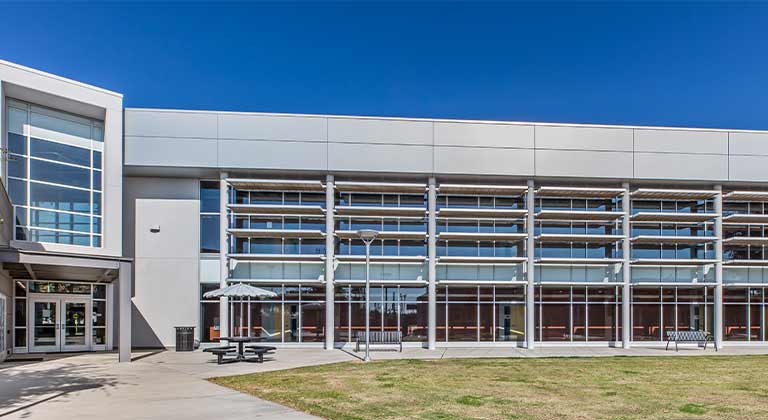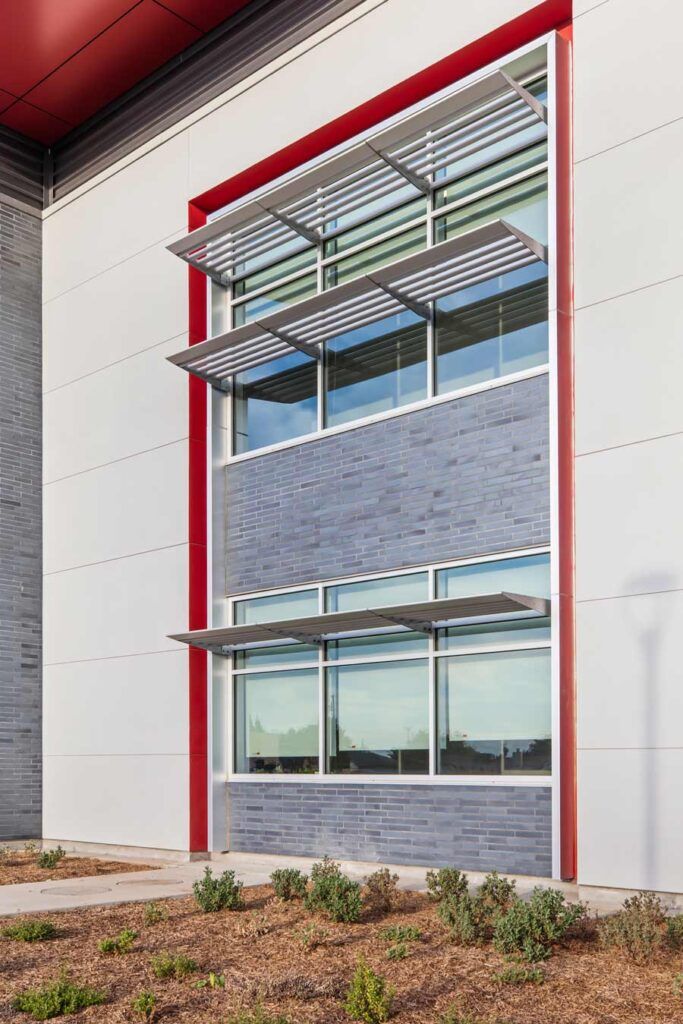
Providing enhanced sun protection and cooling-load control while reducing operating costs for ideal thermal comfort should be the determining factors when developing a high-performance façade. Additional points include daylighting-thermal tradeoffs, minimizing lighting, cooling, and heating. These components – overhangs, fins, light shelves, or secondary exterior skins can absorb or reflect a portion of both direct and diffused solar radiation to cut down on solar heat generated by direct sunlight exposure levels.
As business needs change and adapt, the need to adapt your building envelope for high-performance façades grows. With rising energy costs and a growing awareness of the environmental impact, architects are looking for better ways to control the thermal environment of buildings. Solar components provide an efficient solution by reducing cooling loads and controlling solar heat gain. We have explored the benefits of high-performance facades and how they can be used to create comfortable sustainable buildings.
High-performance façades are façades that provide a high level of thermal performance. They can be used to create comfortable, sustainable buildings by reducing cooling loads and controlling solar heat gain.
Thermal Performance
Architects have long been aware of the importance of thermal performance in buildings. The need for high-performance façades has become more urgent in recent years as energy costs have risen and awareness of environmental impact has grown. High-performance façades provide an efficient solution by reducing cooling loads and controlling solar heat gain. In hot climates, high-performance façades can be used to keep buildings cool, while in cold climates they can be used to prevent interior heat loss.
Sustainable Buildings
A growing number of building designers are using high-performance façades to create sustainable buildings. By reducing energy consumption, high-performance façades help reduce the environmental impact of buildings. They also make it possible for architects to meet the requirements for LEED certification. LEED (Leadership in Energy and Environmental Design) is a green building rating system developed by the United States.

Developing high-performance façades in buildings can present challenges. These include:
- Cost: High-performance façades often require more upfront costs than traditional façade materials, as they tend to be more expensive and require specialized installation equipment and expertise.
- Durability: High-performance façades may need to be specified with higher quality materials than traditional façades to last the life of the building. This can add to costs and may require more frequent maintenance and repair over time.
- Performance: High-performance façades must meet rigorous energy performance standards, which can be difficult to achieve in certain climates or for certain types of buildings.
- Adaptability: High-performance façades may need to be designed for particular functions or conditions, such as solar protection or sound insulation, which can limit their adaptability if a building’s needs change over time.
- Aesthetics: The design of high-performance façades must often balance aesthetic considerations and performance goals, which can be difficult to do. This is especially true for historic buildings, where the façade must maintain a certain character while also providing modern performance.
Finally, it’s important to note that high-performance façades are not always necessary or appropriate for all building types or climates. In some cases, traditional façades may be more appropriate or cost-effective. It’s important to consult with an architect or engineer to determine the best type of façade for a particular building.
